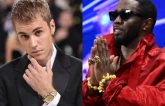
The show titled Imag[in]ing Cities was a collaborative curatorial effort between the energetic multi-disciplinary artist Amin Gulgee and Space for Panafrican Research Creation and Knowledge (Sparck), a fledgling Pan-African organisation that aspires to encourage and develop dialogues that challenge conventional paradigms and traditions of art practice, utilising the varied and stimulating possibilities of emerging technologies.
Initiated by two dynamic women Kadiatou Diallo and Dominique, Malaquais, Sparck was founded in 2008 in Cape Town with a view to expand the boundaries of contemporary artistic practice in the African continent. Since then, the organisation has expanded to include more members in many more countries across the globe.
The 50 artists represented in this show traversed an aesthetic topography that was as urban as it was global, seeking similarities and differences and celebrating both. The modalities of the expression varied from quirky humour to dark gritty realism — Herve Youmbi, an artist from Cameroon, exhibited a series of still photographs of artists from the Third World wearing opaque sunglasses with logos of art museums like Tate and Moma, or dollar signs inscribed on the lens, indicating the decisive ambitions of artists.
Nastio Mosquito from Angola simulated the reportage of an excited young television journalist who is determined to nullify reports of filth-laden urban back-alleys, pointing instead to heaps of luscious edible fruits strewn on the roadsides which he proceeds to consume.
Karachi artist, Bani Abidi now living in New Delhi, films a young woman narrating the story-line from a Bollywood flick which then lapses into absurdity as the narrator becomes more and more animated by the intricacies of the plot. A video from Egyptian artist Khaled Hafiz was particularly noticeable in which Anubis, the jackal headed God of mummification from Egyptian, mythology walks the streets of present-day Cairo, past demonstrators seeking the removal of the Mubarak government, and right into a line of burqa-clad women having their photographs taken.
Though there is a proliferation of video installation in today’s art world, it was South Korean born American artist Nam June Paik who perhaps first deposed the smug assuredness and complacency of art authorities in the 1960s with his avant-garde video installations, which were not held together by linear narratives but by random ‘thought-scapes’ and who inducted videos as a mainstream art genre.
Because the artists came from developing nations, the works resonated with the underpinnings of postcolonial angst and urban restiveness. The Pakistani artists shared with their African counterparts the dichotomies of a hybrid language and culture, histories dotted by strife and revolt and the resulting personal anguishes.
The installation by Goddy Leye an artist from Cameroon, projected a slowly evolving image of the naked artist crawling into view from within the darkness, wrapping his body close to the ground as if caught in the throes of birth or alternately beseeching a merciful respite from an on looking subjugator. Incidentally, the artist passed away just two days before the show opened in Karachi, at the age of 45.
It is commonly known that the ambient space for installation-art is as vital as the art displayed or ‘experienced’. But the chaotic buzz of the excited audience added to the hyper reality of many of the images, especially the photomontages like the ones created by Sheherbano Hussain or Danish Raza. And inadvertently, true to the characteristic of installation-art, wherein the audience contributes to the production, the noise and chaos replicated the urban disorder and turmoil.
However, amidst the plethora of visual gluttony, stood out three photos by Aasim Akhtar; large white digital prints displaying ubiquitous electricity poles sprouting a tangle of wires, the most basic indicator of the urban condition; the images were pregnant with observational wryness and yet they held a simplicity so stark that they leapt with forceful vibrancy. Amin Gulgee and Sparck succeeded in giving Karachi a brief encounter of a seminal show in the years to come.
Published in The Express Tribune, February 23rd, 2011.
1730959638-0/trump-(19)1730959638-0-405x300.webp)
1719925273-0/BeFunky-collage-(46)1719925273-0-165x106.webp)






1730970209-0/Express-Tribune--(2)1730970209-0-270x192.webp)
1730958970-0/Untitled-design-(43)1730958970-0-270x192.webp)







COMMENTS
Comments are moderated and generally will be posted if they are on-topic and not abusive.
For more information, please see our Comments FAQ